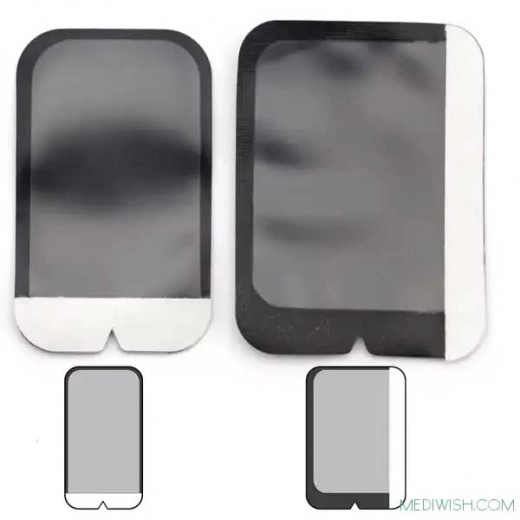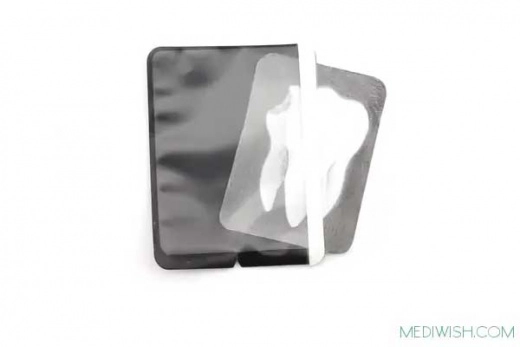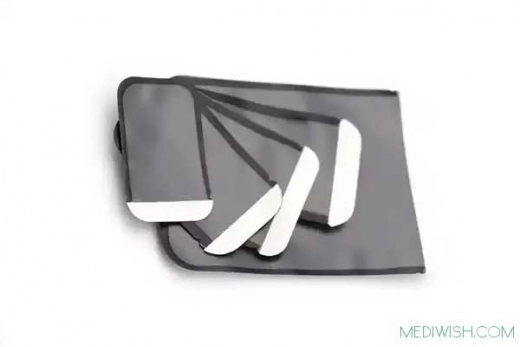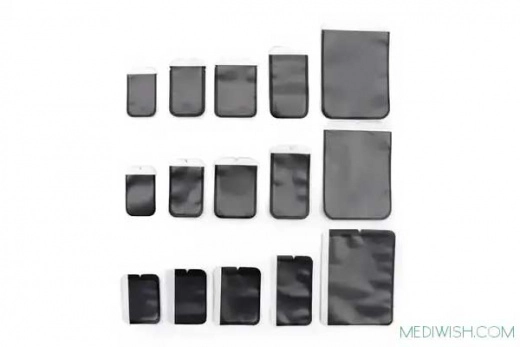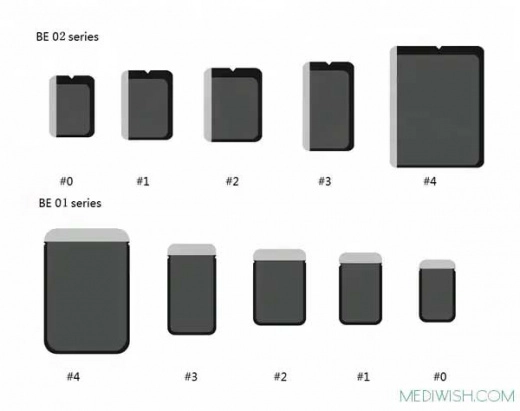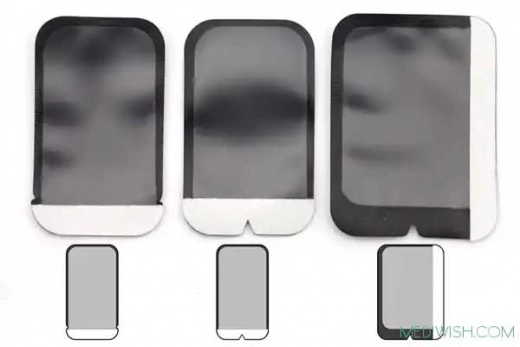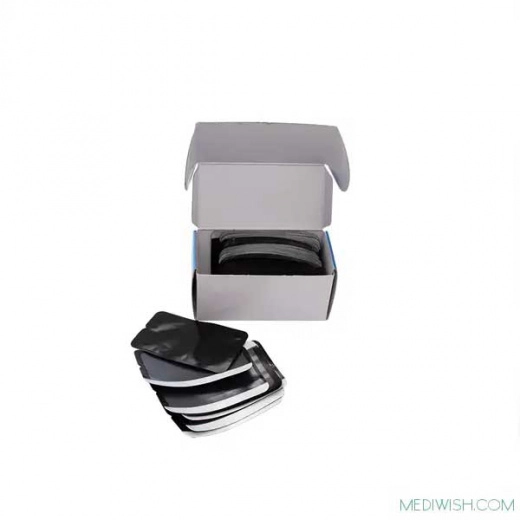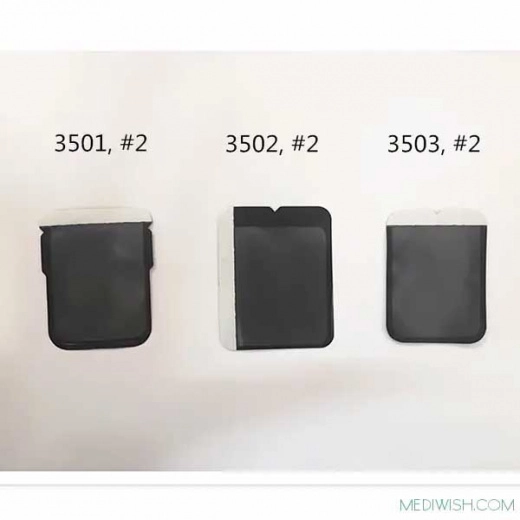Dental X-ray barrier envelopes are disposable protective sleeves used to cover digital phosphor plate imaging sensors in dentistry. These sleeves are designed to provide a barrier between the sensor and the patient's mouth, ensuring a hygienic and contamination-free environment during X-ray procedures.
|
Product Name: |
dental x-ray barrier envelope |
|
Material: |
Composite material |
|
Model: |
MZS-035 |
|
Packing |
300 pcs/box, 100 pcs/box, 50 pcs/box |
|
Size: |
# 0, 1, 2, 3, 4 |
|
OEM/ODM: |
Available, please let us know your information. |
|
Grade: |
high quality material + excellent techniques + great service |
|
Usage: |
X-ray Phosphor Storage Plates Barrier Envelopes/Protection Bag |
|
Payment: |
L/C, T/T Western Union, MoneyGram |
|
Payment terms: |
EWX, FOB, CNF, CIF, DDU, DDP etc. |
|
Port: |
Hefei |
|
Transport: |
1. DHL, FEDEX, UPS, TNT, EMS (3-5 workdays) |
|
Apply to: |
Medical wholesaler, Distributor, Retailer, Hospital, Clinic |
|
Lead time: |
3-5 working days if small order; 5-15 working days if need mass production. |
Packaging details: 300pcs/box, 100pcs/box, 50pcs/box
Safe and Hygienic Operations: Dental X-ray barrier envelopes are a crucial tool in maintaining a safe and hygienic environment during dental procedures. They effectively prevent the transfer of harmful elements between patients and dentists, making them a must-have when capturing X-rays.
Maintain Cleanliness of X-ray Plates: These barrier envelopes play a vital role in preserving the cleanliness of reusable dental X-ray plates. By securely covering the plates, they help prevent contamination and ensure that the plates remain sanitary for the next patient. Additionally, the envelopes provide an added layer of protection, safeguarding the plates against scratches and damage.
Quality Materials and Ease of Use: The barrier envelopes are crafted from durable plastics that can withstand potential damage. This ensures that you can confidently insert the X-ray plates without worrying about tearing or compromising the envelope's integrity. The transparent side of the envelope allows for easy positioning of the plate, facilitating smooth and accurate placement during X-ray procedures.
By utilizing these barrier envelopes, dental practices can maintain a high standard of cleanliness, protect their equipment, and contribute to the overall safety and well-being of both patients and dental professionals.
1. Slide the Imaging Plate with Care
When handling an imaging plate, it is essential to exercise caution and precision. Start by sliding the imaging plate into the designated barrier envelope gently. Make sure to align it properly within the envelope to avoid any potential damage or misplacement.
2. Remove the Adhesive Strip
Once the imaging plate is securely placed within the barrier envelope, locate the adhesive strip. The adhesive strip serves as a seal, protecting the plate from external elements. Carefully peel off the adhesive strip, ensuring that no residue remains on the imaging plate's surface. Removing the strip should be done with a steady hand to prevent accidental tearing or contamination.
3. Hermetically Seal the Envelope
After removing the adhesive strip, it's time to seal the envelope hermetically. Ensure that the envelope is completely closed and airtight to maintain the integrity of the imaging plate. A proper seal is crucial in preventing the entry of dust, moisture, or any other contaminants that may compromise the imaging process.
Flexible payment solutions for your convenience.
Bank Transfer:Secure and Reliable
Transfer funds directly to our company account. Request bank details, transfer funds, and notify us for seamless processing.
Cash Payment: Convenient and On-site
Pay in cash upon delivery. Inspect goods before payment. Check availability in your region.
Cashless Payments: Secure and Convenient
Pay electronically with Visa, MasterCard. Enter card details during checkout. Enjoy secure transactions.
Choose payment method that suits you best for a seamless purchasing experience.
Contact our customer service for assistance & inquiries.
Offer various to cater to your needs:
-In-house: (Hefei only): Warehouse can deliver order directly if you are in Hefei.
-Courier: (within China): Receive pack via courier service anywhere in China.
-Factory Pickup: Contact our employee with truck number to pick up your goods from us.
-International Postal Delivery: Choose EMS, FedEx, DHL, Usually Post. You'll got notification when your parcel arrives.
-Air Variant (packages > 20 kg): Opt: air cargo to nearest airport in your country.
-Multimodal Transportation: Enjoy container transport, rail, road options.
Shipments undergo official customs procedures, including customs export declaration.
Experience convenient forwarding with our versatile variations. Place order today & enjoy seamless delivery process.


